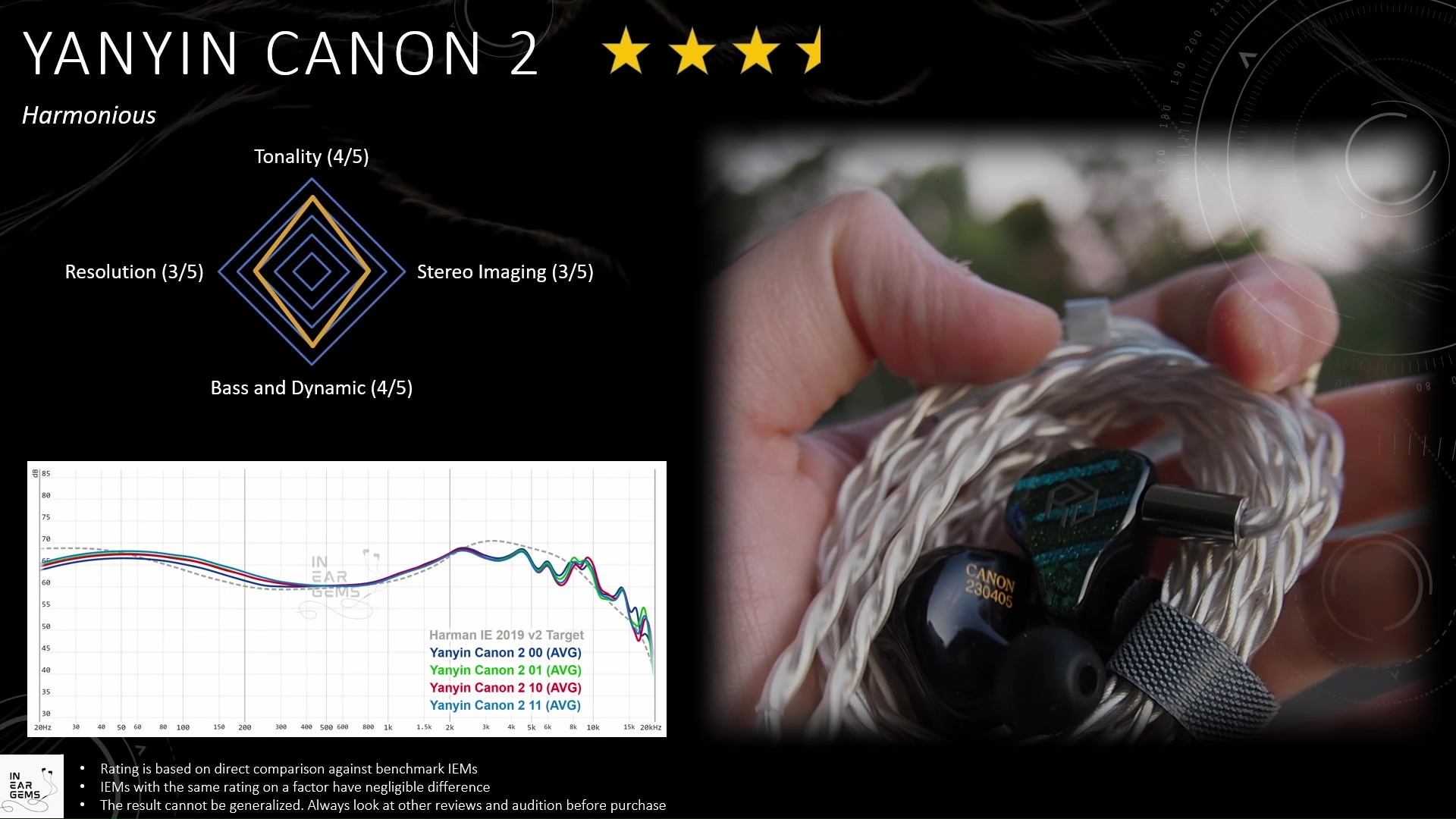Yanyin Canon 2 - Harmony
Today, we look at a five driver hybrid IEM from Yanyin, the Canon 2.
My review is also available on YouTube:
Forewords
- What I look for in an IEM is immersion. I want to feel the orchestra around me, track individual instruments, and hear all of their textures and details. I’m not picky about tonality, as long as it does not get in the way of immersion.
- I rate IEMs within with a consistent scale from 1 (poor) to 3 (Adequate) to 5 (outstanding). Ratings are assigned by A/B tests against benchmark IEMs, regardless of the retail price.
- Ranking list and measurement database are on my IEM review blog.
- Terms used in my reviews are consistent with the glossary by Headphonesty
- This review is possible thanks to the Australian review tour arranged by 7th Acoustic and Damz87 (Thank you!). I have no affiliation with or financial interest in 7th Acoustics. The unit retails for $800 at the time this review was published. You will need to reach out to 7th Acoustic on their Facebook page to order a unit.
Sources for listening tests:
- iBasso DX300 (for all A/B tests)
- FiiO K7
- Hidizs XO
Local FLAC files ripped from CDs or bought from Qobuz were used for most casual listening and A/B tests. My playlist for A/B tests can be found on Apple Music here.
All of my listening was done with Final Audio Type E medium ear tips. I listen at a medium volume. I usually turn up the volume until the midrange is fully audible and detailed, unless a treble peak or overwhelming bass prevents me from doing so.
Specs
- Driver: 4BA + 1DD
- Connector Type: 2-pin
- Impedance: 27-40ohm
- Sensitivity: 112dB
Build and Comfort

Canon 2 comes in a simple cardboard box.
Inside the box, you would find a leather box that stores both the IEMs and the cable. 3 pairs of silicone ear tips are stored in smaller plastic box, hidden underneath the paper works. The packaging is quite efficient and effective.
The cable is decent with a 4 wire design and metal hardware. Personally, I’m more impressed by the leather carrying case. It’s quite enjoyable to hold and use.

The earpieces are medium in size and constructed from a black resin. The yellow letters and the color-coded vents are quite reminiscent of the Elysian Acoustic Labs Diva 2023.
Similar to that IEM, Canon 2 also features metal nozzles, though the size of these nozzles are more agreeable.
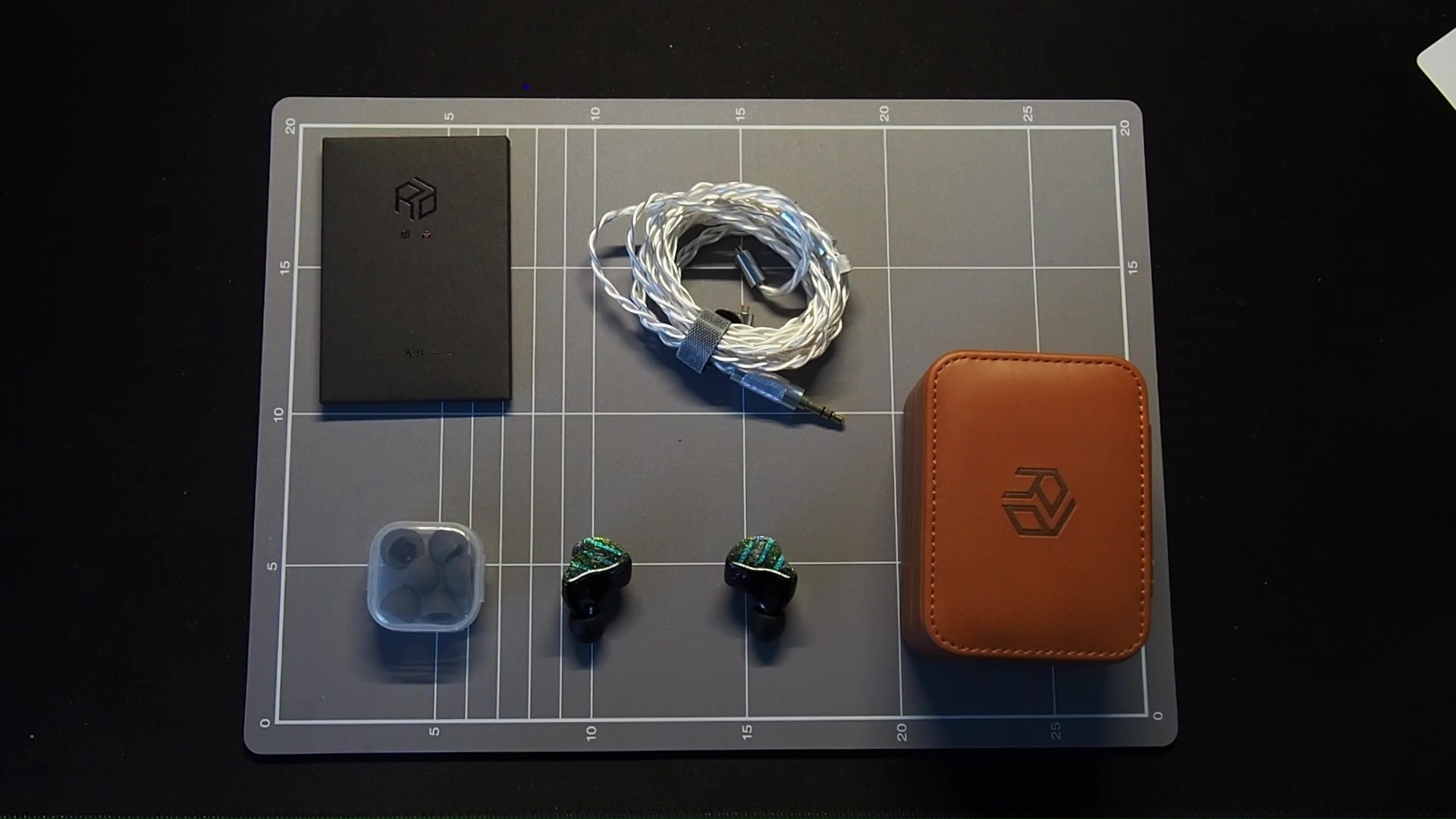
Due to the more restrained size of earpieces and nozzles, Canon 2 should be comfortable to wear for most people. Unfortunately, my ears do not seem to work well with these IEMs. I found that the nozzle angle is slightly off, preventing the IEM from lying flat against my ears. I also experienced slight pressure build up. I would recommend using shorter and smaller ear tips with these IEMs, as the nozzles are slightly longer than usual.
 Subjective Experience
===
Subjective Experience
===
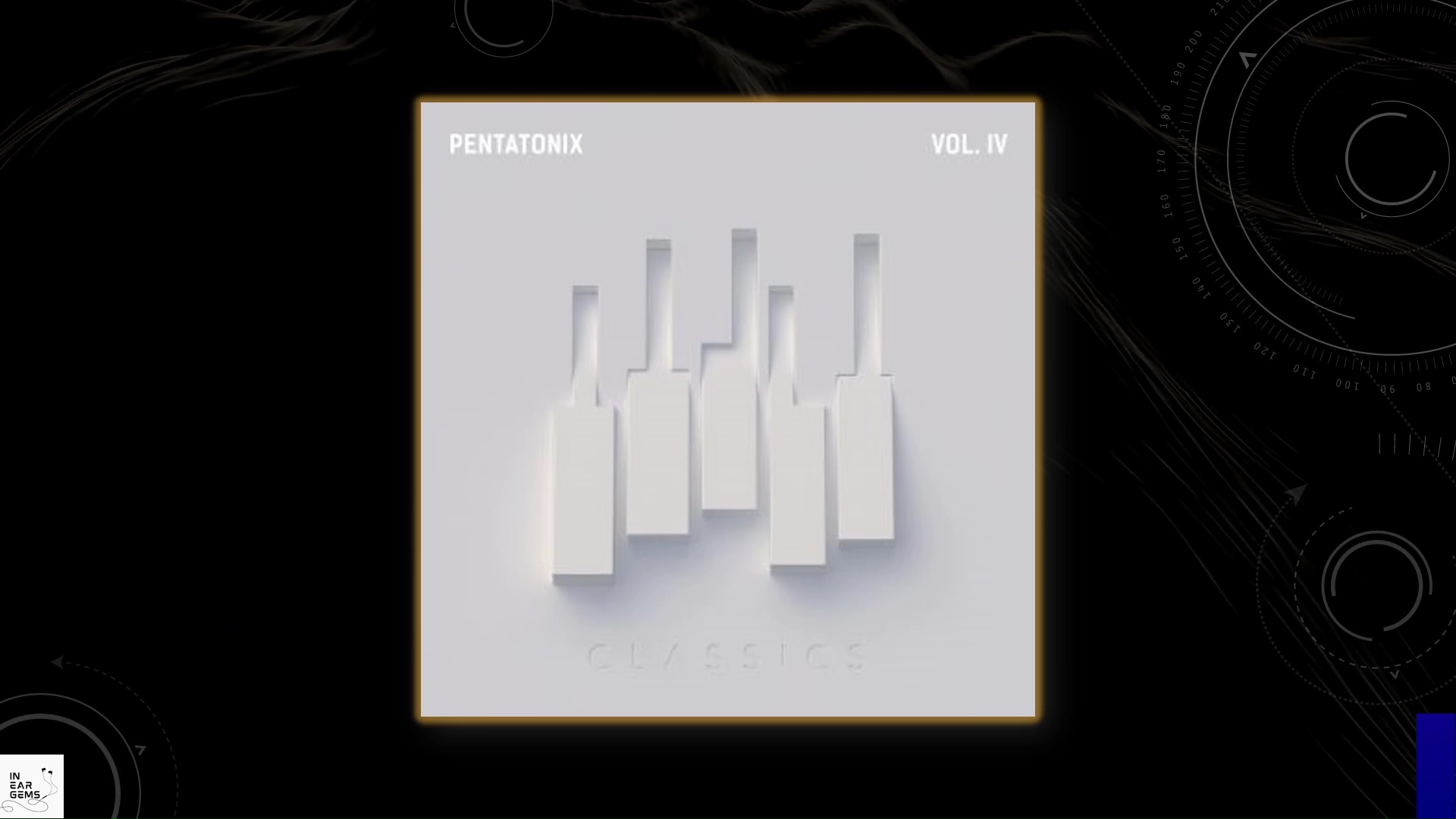
We start the subjective impression with vocal music from Pentatonix.
When I listen to the opening song of the album, Bohemian Rhapsody, my first impression was how “muscular” the presentation is. Even with the least bassy configuration, Canon 2 was still able to highlight the bass line by Avi. The kick drum created by Kevin’s beatboxing also sound punchy and dynamic. At the same time, the bass does not overpower the rest of the mix. Canon 2 does not have the a squeaky clean bass line, but I did not detect any smearing or bluntness.
The midrange vocals of Mitch and Scott also present in the mix. On the other hand, the soprano line of Kirstin is less highlighted and requires a bit more effort separate and follow. All voices sound full and natural. The details are also good, though I did find myself wanting a bit more texture and nuances.
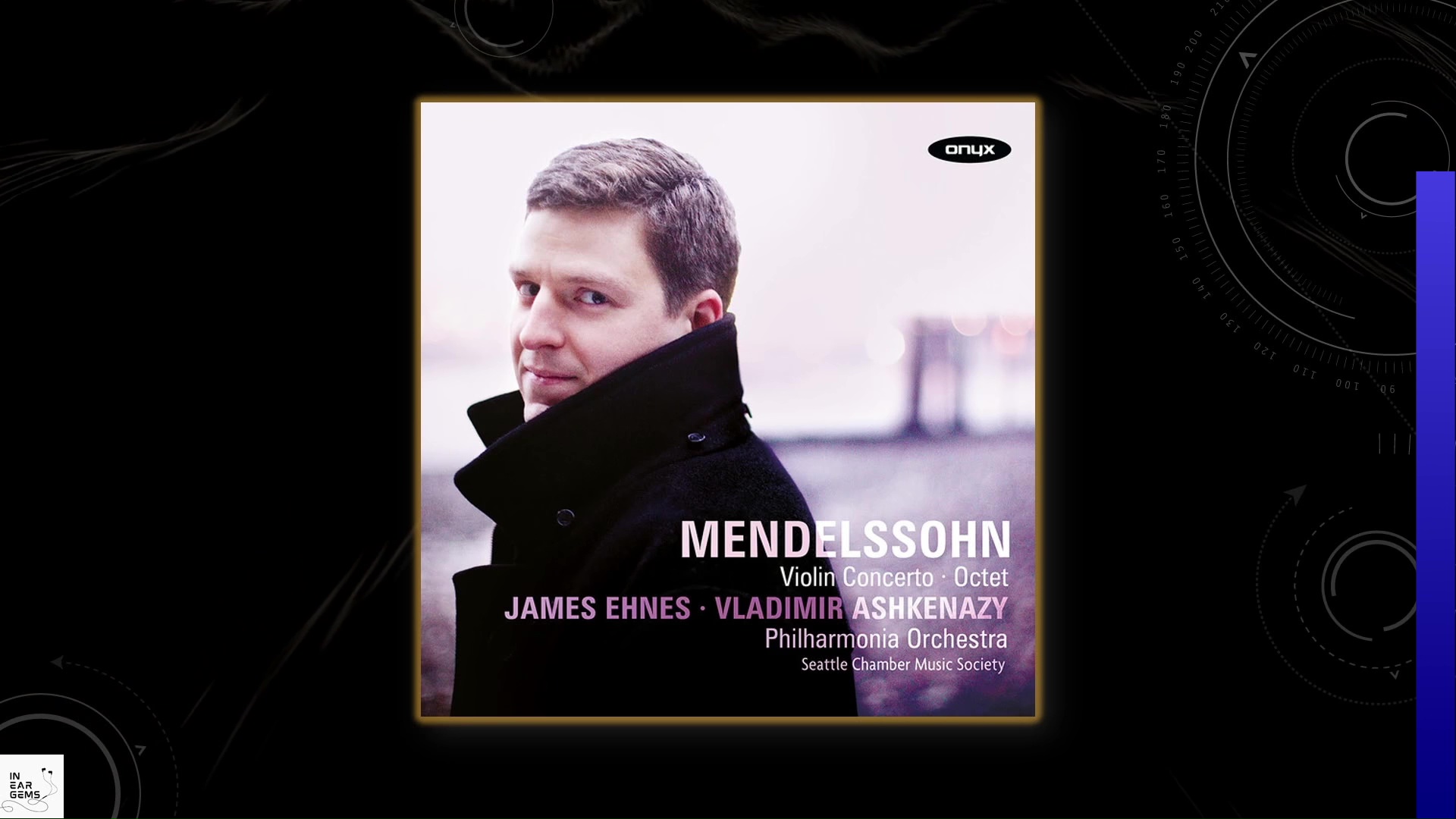
Let’s move on with Mendelssohn violin concerto performed by James Ehnes.
Again, Canon 2 provides a muscular presentation. I particularly enjoy the rumble and physical sensation from the cellos and the doublebass.
The rest of the orchestra sounds natural and pleasing. However, I’m not entirely happy with the slight hollowness in the tonality of the violin, as if there is a slight over emphasis in the upper midrange. I found myself constantly turning the volume up to hear more body and details in the violin, and then quickly turning the volume down to avoid the shrillness when the violin and the woodwind section play louder, such as around 5:00.

Next, we come back to pop music with a live performance by Ed Sheeran.
All of the previous pros and cons are carried over. Canon 2 provides a strong bass response. Kick drums are particularly thumpy with clean note attack. My only criticism here is the slightly lack of texture at the decay end of bass notes.
Moving on the midrange, I found Ed Sheeran’s voice to be dominating in the mix and placed quite upfront. Again, I hear a slight imbalance toward upper midrange, leading to occasional glares and shoutiness. Turning up one of the tuning switches can balance the midrange to a degree, but the upper midrange glare and shoutiness are still there.
The treble is present, but not highlighted within Canon 2. On the plus side, I did not hear any treble harshness or sibilance.
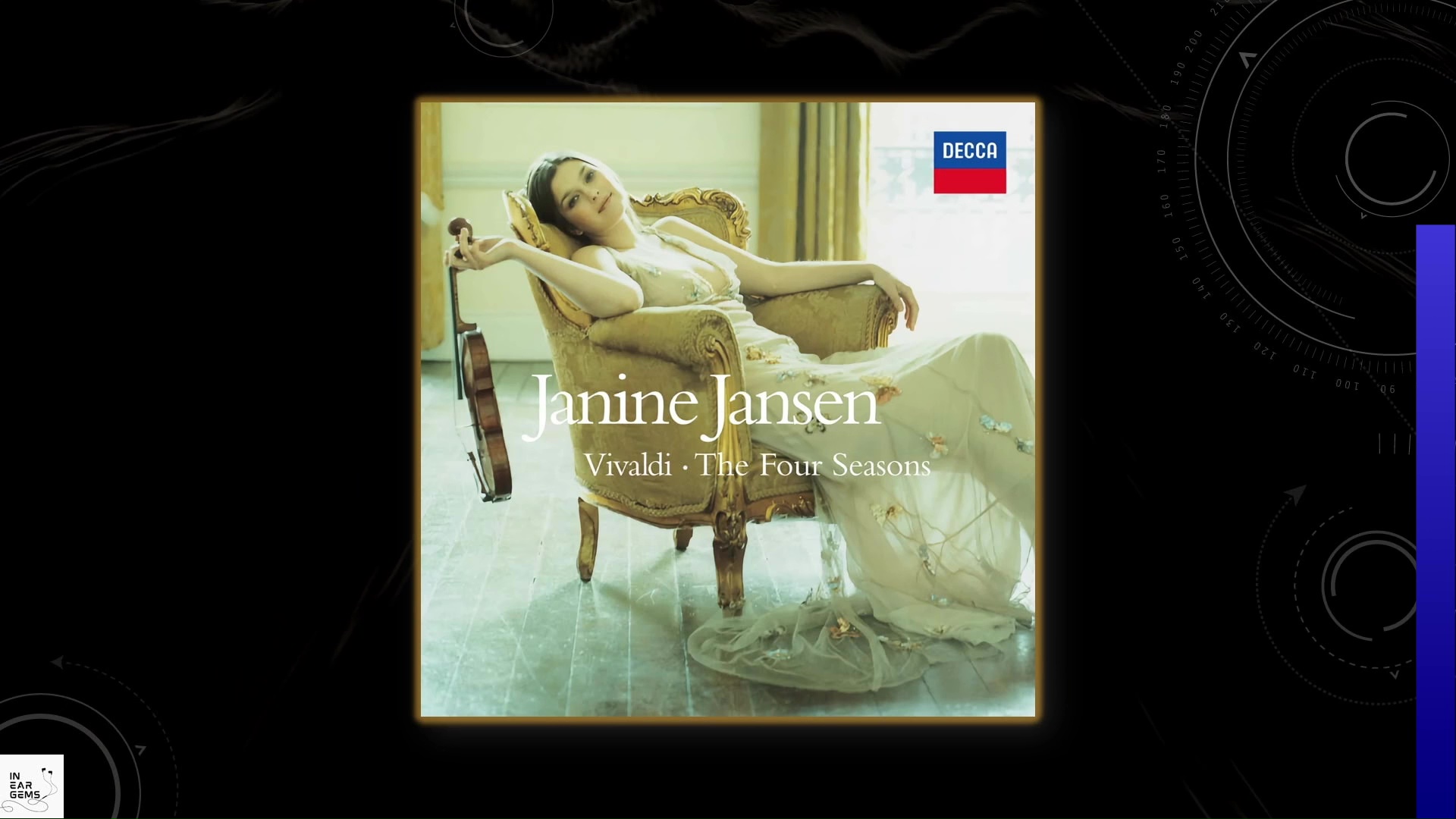
In order to have a closer look at the resolution, I listen to the four seasons violin concerti of Antonio Vivaldi, performed by Janine Jansen and orchestra.
I was not immediately impressed by the resolution of Canon 2, In fact, my first impression from denser music, such as the third movement of the Summer concerto, was that Canon 2 makes it a bit harder to follow individual instruments.
Upon closer listening, my impression improved. It seems that Canon 2 favours coherency and integration rather than the separation of instruments. I found that instruments do not smear into each other. It’s just that there is not a lot of space between instruments, and the instruments do not pop out with laser sharp definition. On the plus side, I appreciate the extra details and textures from the cellos and contrabass, which are barely audible on other IEMs such as Moondrop Blessing 2.

For the soundstage test, I listen to the Live album by Hans Zimmer.
At a glance, the soundstage of Canon 2 does not seem very special because it does not push the center of the midrange back and away from the head. However, the soundstage of Canon 2 becomes much more interesting when the music becomes more complex with distant background elements, such as choral sections. With this music, Canon 2 can show a clear separation between foreground and background elements. At times, it can create a convincing illusion that the background elements come from outside the headstage. In direct comparison, I found the depth illusion of Canon 2 to be a solid step ahead of IEMs with flatter soundstage, such as the Moondrop Blessing 2. On the other hand, both IEMs trade blows in terms of the incisiveness and clarity of the stereo image. Frequency Response ===
Frequency response of Supernova against the Harman in-ear target. Measurements were done with an IEC-711-compliant coupler and might only be compared with other measurements from this same coupler. Visit my graph database for more comparisons.
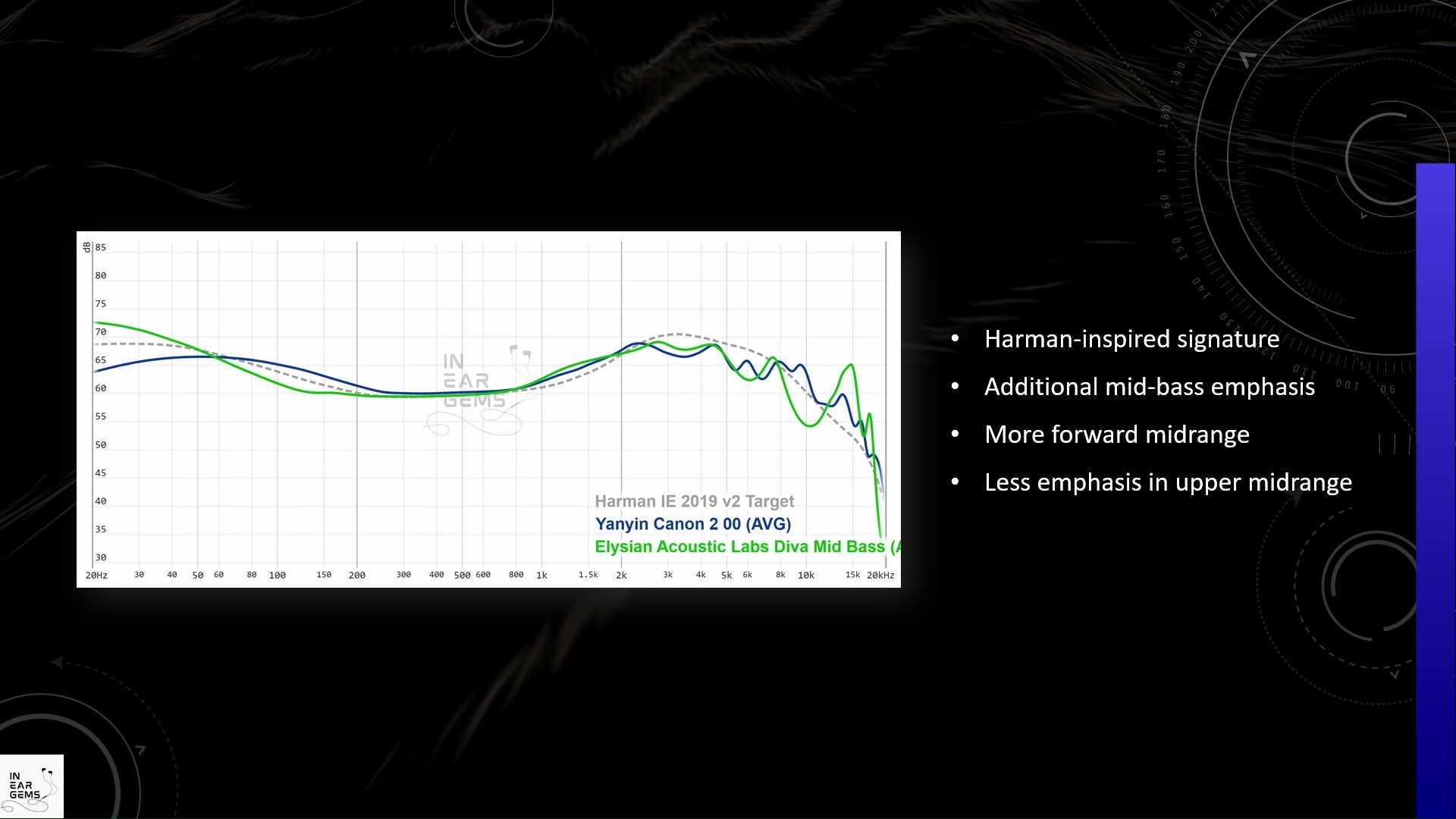
It is helpful to think of an IEM as a filter that highlights or subdues different parts of the incoming audio signal. This effect can be measured objectively by the squiggly lines above, called Frequency Response (FR) graphs, which measure how loud an IEM is at different frequencies from 20Hz (bass) to 20kHz (upper treble). Subjectivity is how your ears and brain interpret the effect of that filter on your music and decide whether it is “enjoyable.” There are some “rules of thumb” when it comes to tonality, but most interesting IEMs usually bend the rules masterfully.
The sound signature of Canon 2 aligns with the Harman in-ear target, but with some useful modifications. The mid-bass is boosted above the target, giving Canon 2 that muscular presentation. Interestingly, Canon 2 traces the frequency response of the Diva 2023 closely from above 300Hz.
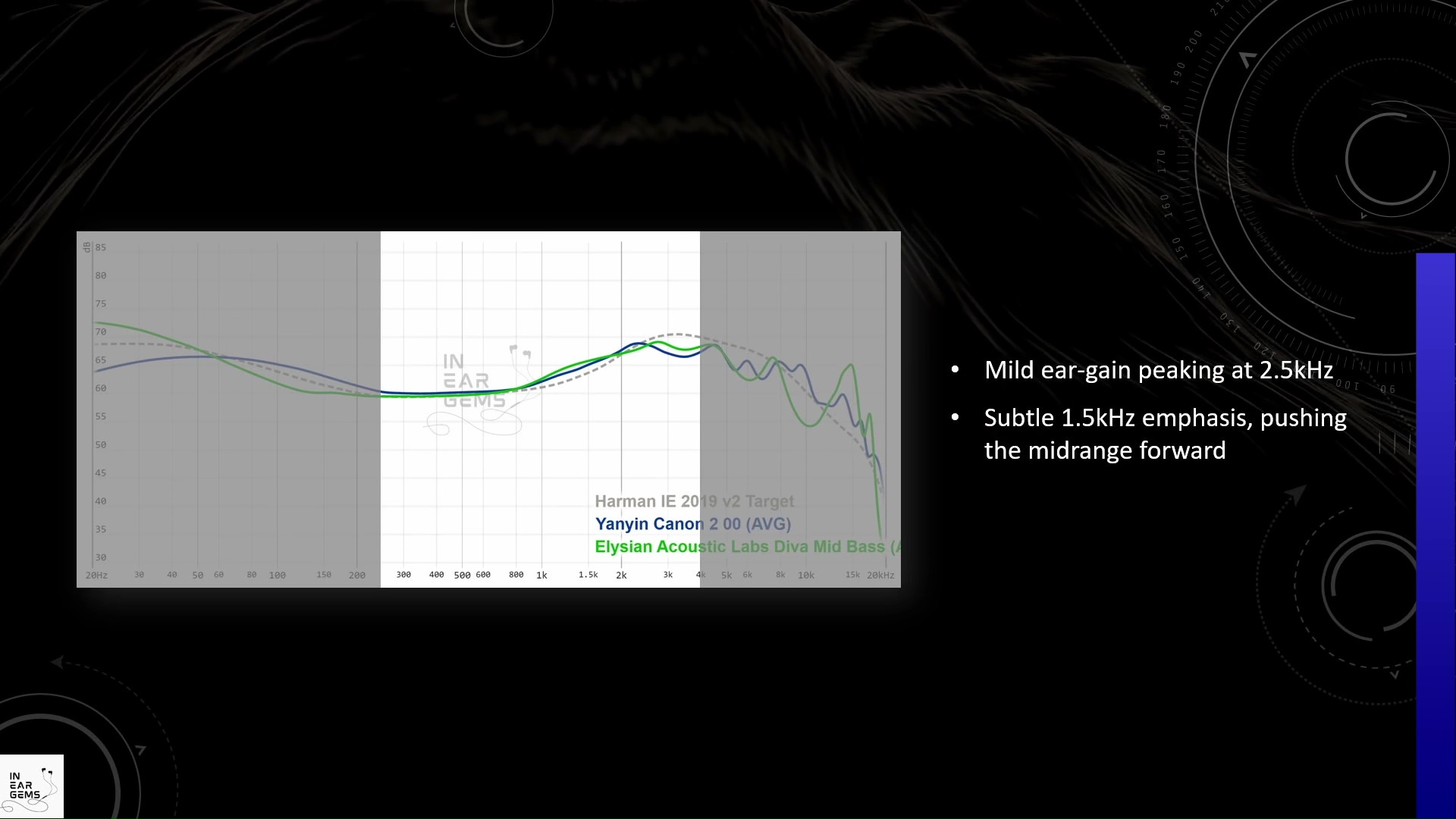
Zooming into the midrange, we can see that Canon 2 pushes the frequencies around 1.5kHz forward comparing to the target. This tuning choice partially explains why vocals and instruments are more upfront with Canon 2. Luckily, the upper midrange was dialed down a bit to avoid making the midrange too intense. This tuning choice also helps Canon 2 avoid the harshness and shoutiness that is common among IEM tuned according to the Harman target. The subtle warmth in the tonality of Canon 2 can also be explained by the more subdued upper midrange.
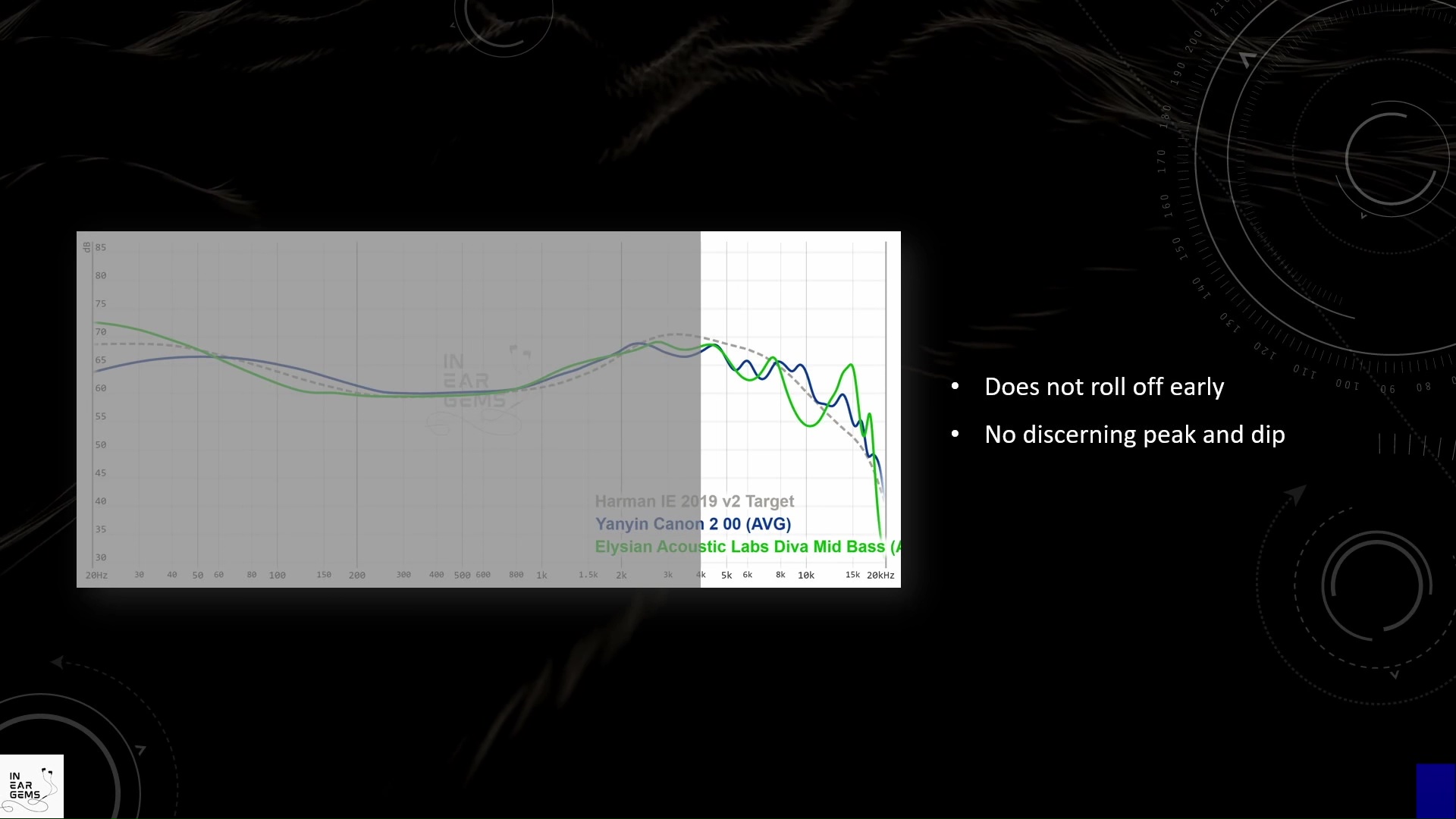
The treble of Canon 2 does not roll off early. It is relatively smooth with no problematic peak and dip.
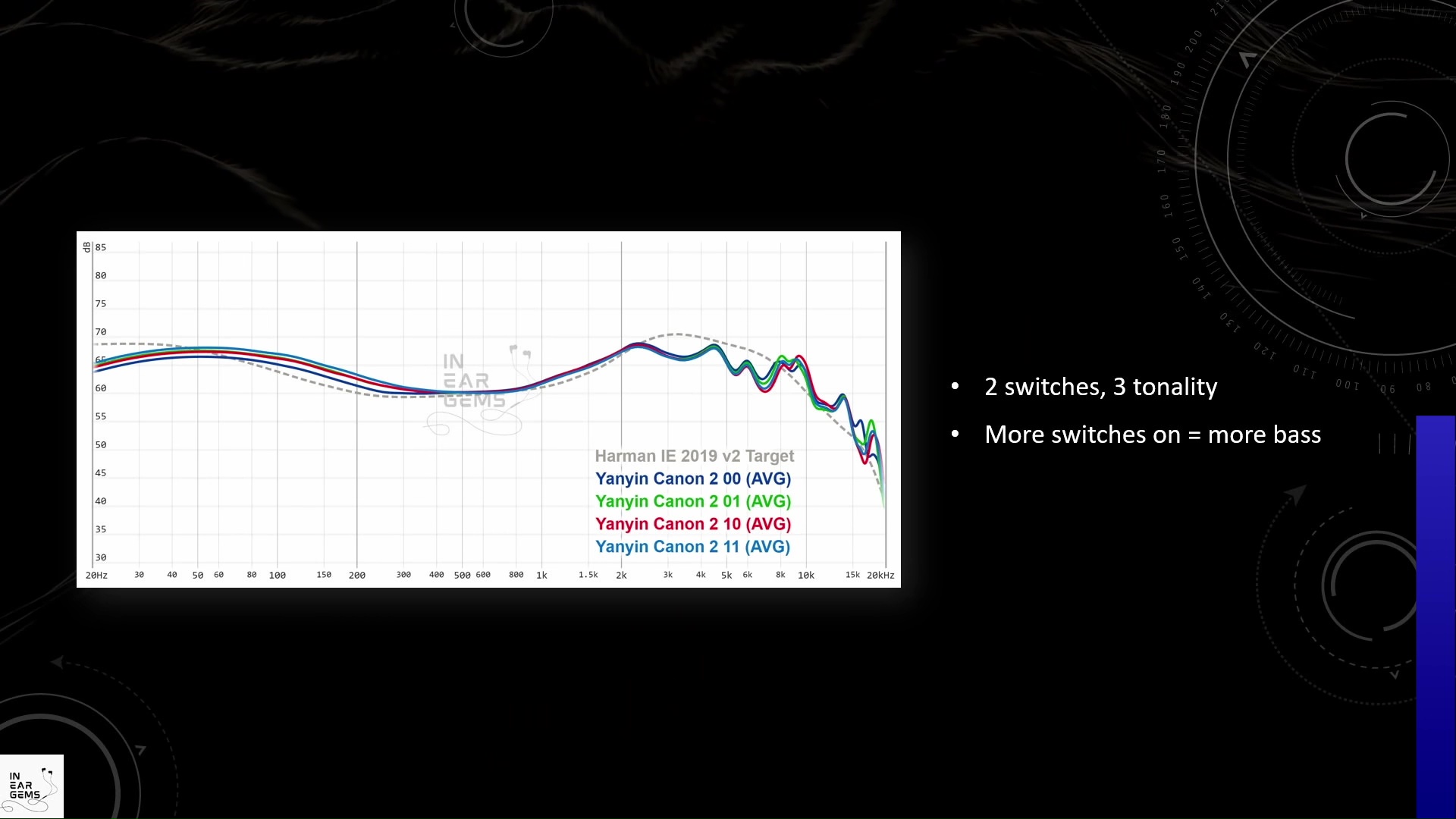
The bass of Canon 2 changes depending on the tuning switch. In general, the more switches you turn on, the warmer and bassier Canon 2 becomes. However, Canon 2 never sounds overwhelmingly bassy, because the bass is never higher than the upper midrange across all tuning options. All base tuning options also emphasise midbass over subbass, meaning you will hear the bass more than feeling it.
 Resolution
===
Resolution
===

Resolution is a fascinating subject due to the difficulty of pinning down what it really is. To me, “resolution” can be broken down into three components: (1) Sharpness, incisiveness, or “definition” of note attacks (see the figure above). (2) The separation of instruments and vocals, especially when they overlap on the soundstage. (3) The texture and details in the decay side of the notes. The first two give music clarity and make it easy to track individual elements of a mix. The last provides music details and nuances. Smooth and well extended treble response plays a crucial role.
As I mentioned previously, Canon 2 favours coherency and integration rather than the separation of instruments. Even though instruments do not smear into each other, their placement and separation are not laser sharp. On the plus side, Canon 2 does a good job at presenting the details and textures of most instruments in the midrange, though it lacks the last bit of micro details and nuances that I expect, coming from something like the Andromeda 2020 and the U12T. In direct comparisons, I found Canon 2 to trade blows with Moondrop Blessing 2, though I prefer the way Canon 2 presents the violin with more weight and depth due to the extra bass.
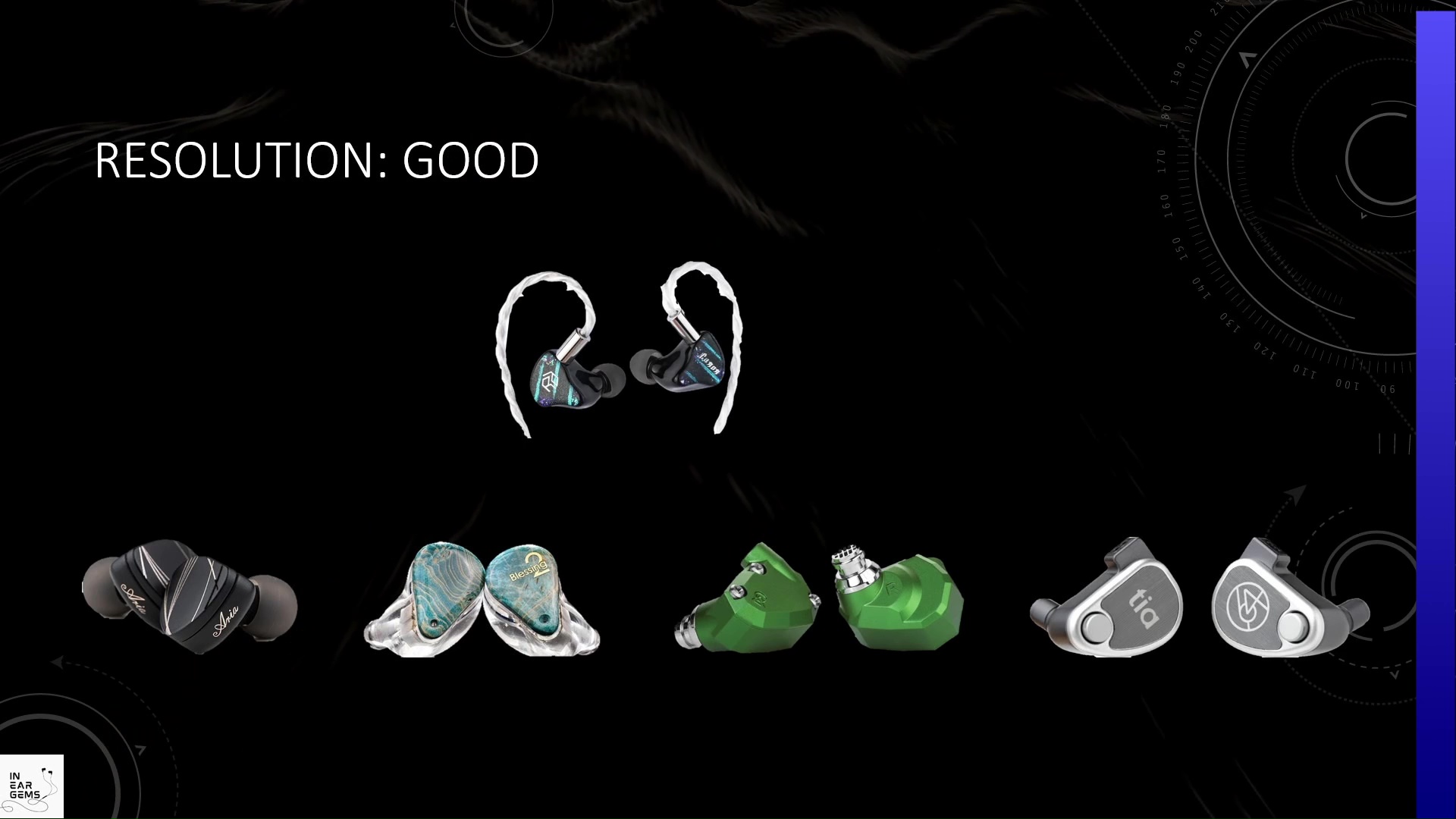
In conclusion, I would say the resolution of Canon 2 sits somewhere between Moondrop Blessing 2 and Andromeda 2020. I consider this level of resolution to be good.
Soundstage Imaging

Stereo imaging or “soundstage” is a psychoacoustic illusion that different recording elements appear at various locations inside and around your head. Your brain creates based on the cues in the recording, which are enhanced or diminushed by your IEMs, your DAC, and your amplifier. Some IEMs present a wide but flat soundstage. Some present a “3D” soundstage with layering, depth, and height. In rare cases, with some specific songs, some IEMs can trick you into thinking that the sound comes from the environment (a.k.a., “holographic”)
When it comes to soundstage imaging, again, Canon2 favours coherency and integration rather than separation. However, with the right kind of recording, this IEM can still show a convincing sense of depth and sell the illusion that the background elements come from outside the headstage.
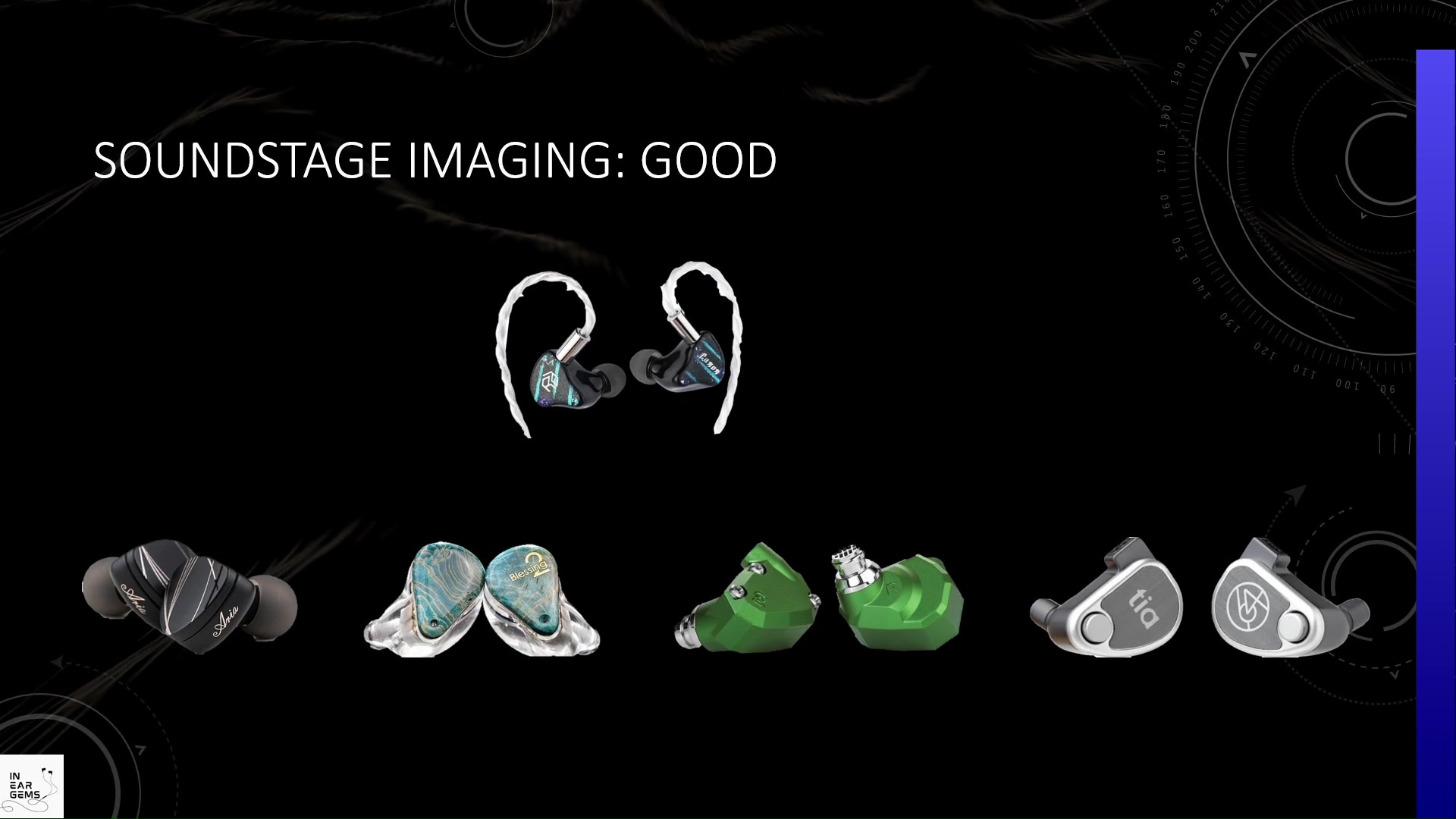
In summary, I found the soundstage and imaging of Canon 2 to sit between the level of Blessing 2 and Andromeda 2020. It lacks the incisiveness and layering of Andromeda and above, but it commendable in terms of how 3D it can present the soundstage, comparing to other good performers like Blessing 2.
Conclusions
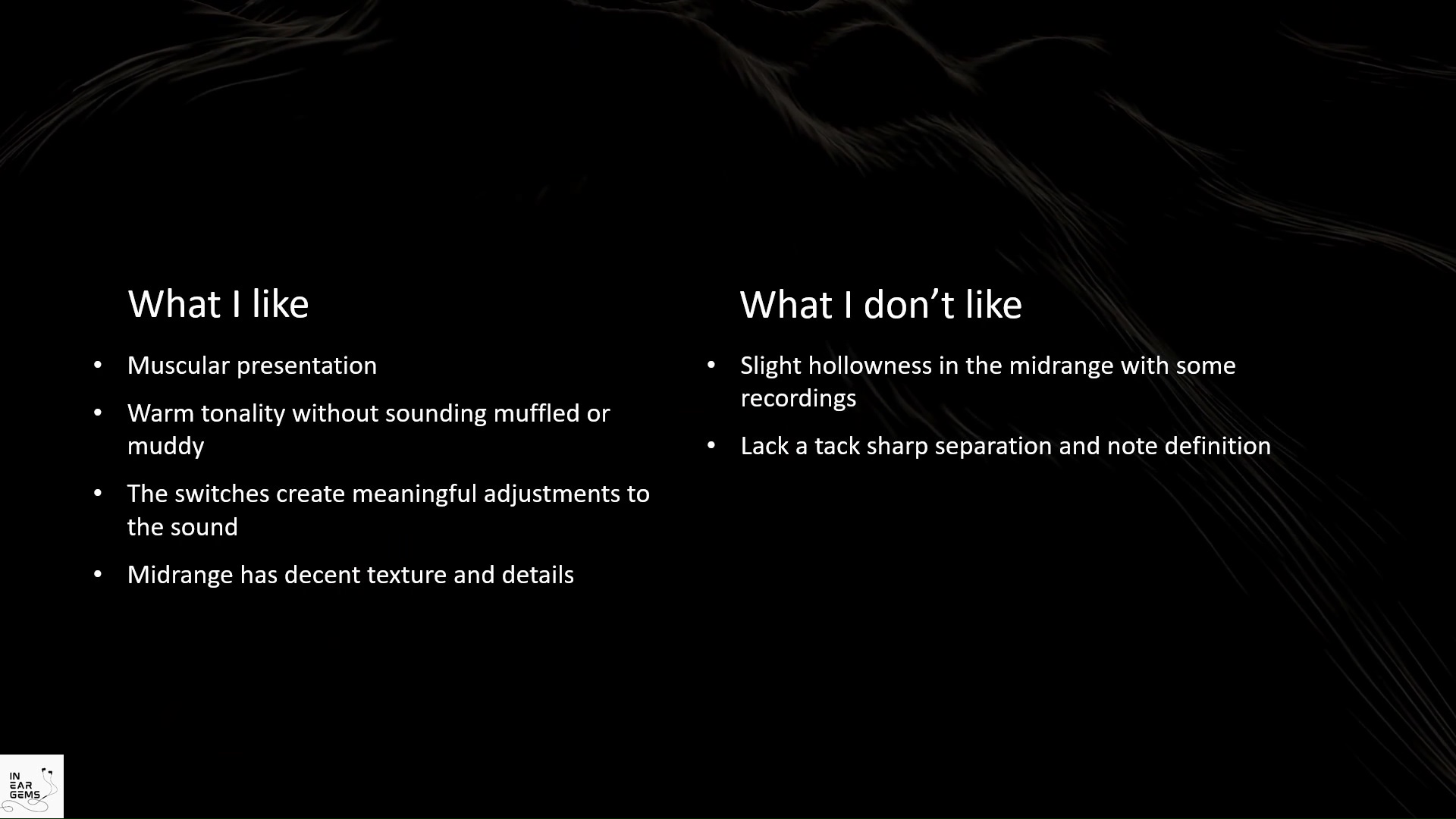
In conclusion, Yanyin has done quite a few things right with Canon 2. I particularly enjoy the muscular presentation that works well with both modern commercial music and classical recordings. Its warm tonality is pleasant without veering into muffled or muddy territory. The switches on the IEM contribute meaningfully to sound adjustments. The midrange also stands out with commendable texture and detail.
While the Canon2 IEM has some great qualities, it does show a bit of hollowness in the midrange with certain recordings. For me, I also wish that this IEM has a sharper separation and better note definition.
So, should you get Canon 2?
If you haven’t got a competent IEM in the level and price bracket of Canon 2, this IEM is a worthy candidate for your collection. However, if you already have some competent IEMs, Canon2 does not offer many compelling reasons. In many ways, Canon 2 highlights the challenge of the current hyper-competitive IEM market. Don’t get me wrong, Canon 2 is a good IEM. But being good in a market filled with good options is a tricky position to be.
Absolute Sonic Quality Rating: 3.5 (Very Good)
Bias Score: 3 (I’m lukewarm about this IEM)
